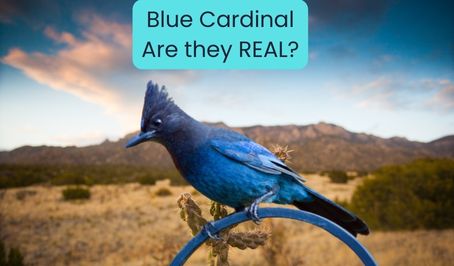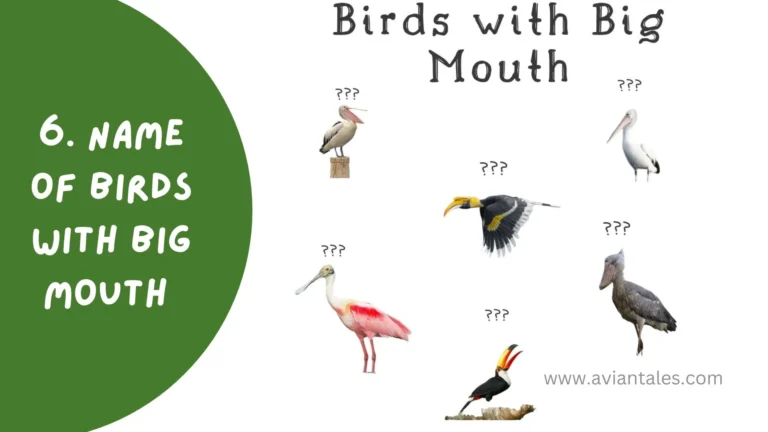15 Elegant Small Birds With Long Beaks (With Pictures)
The group of small birds with long beaks is fascinating in the avian world. This group attracts the attention of bird enthusiasts because of their unique appearance and behaviors. These birds are found worldwide and are popular for their lovely voices. It is also known that some tiny birds with long beaks can mimic the noise of various animals and birds.
Table of Contents
If you are a bird enthusiast you can also read Unique Birds with Big Mouth which gives you a detailed overview of birds having large mouths.
Small Bird with Long Beaks Name
Let’s discuss the details of small long-beaked birds.
– Sword-Billed Hummingbird
This bird is the perfect example of a small bird with a long thin beak. This bird is famous for its long beak that is longer than its body. The male hummingbird has a bronzy copperhead, dark bronze-green upperparts, dark brown features, a blackish throat, and a white spot behind each eye.
Female birds look like male but have white upperparts, dark green spots behind their eyes, and olive spots in their throats. They live in montane forests and the forest of northwestern South America. Bill-shaped beaks help them feed spiders, insects, and the nectar of long tubular flowers to get protein.

– Cerulean Kingfisher
The Cerulean Kingfisher is a blue bird with a long beak. Male and female kingfishers look almost similar except for their white throat, areas between the beak, and eye and neck patches.
These live along streams, river banks, ponds, estuaries, mangroves, and flooded paddy fields. Kingfisher feeds on insects, fish, and crustaceans.
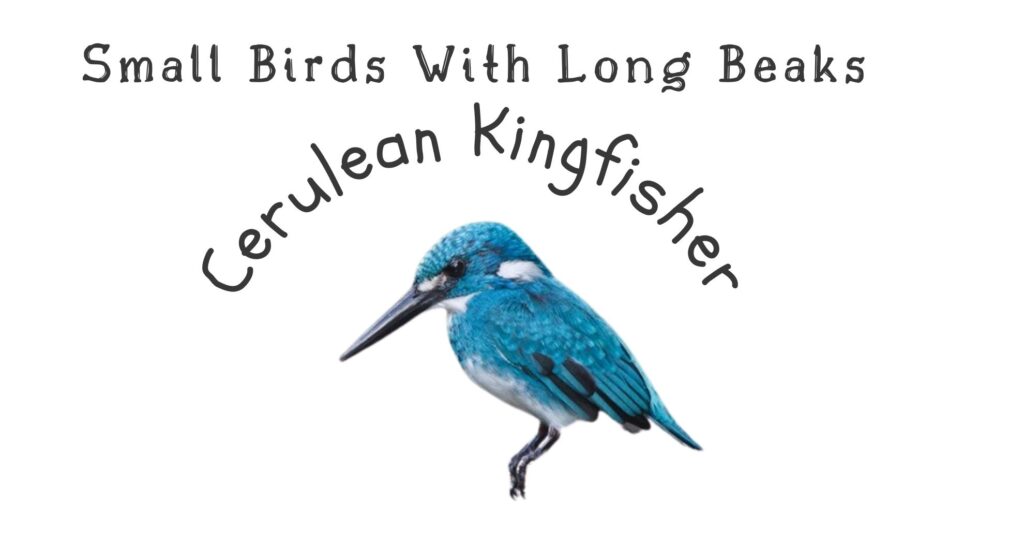
– Little Spiderhunter
Spiderhunter has a thin, down-curved long beak yellow belly with a white and grey face. Male and female spider hunters look alike and live in forests, plantations, forest edges, mangroves, and yards in Southeast Asia and the South. Their name indicates they prey on spiders but feed on nectar and insects.
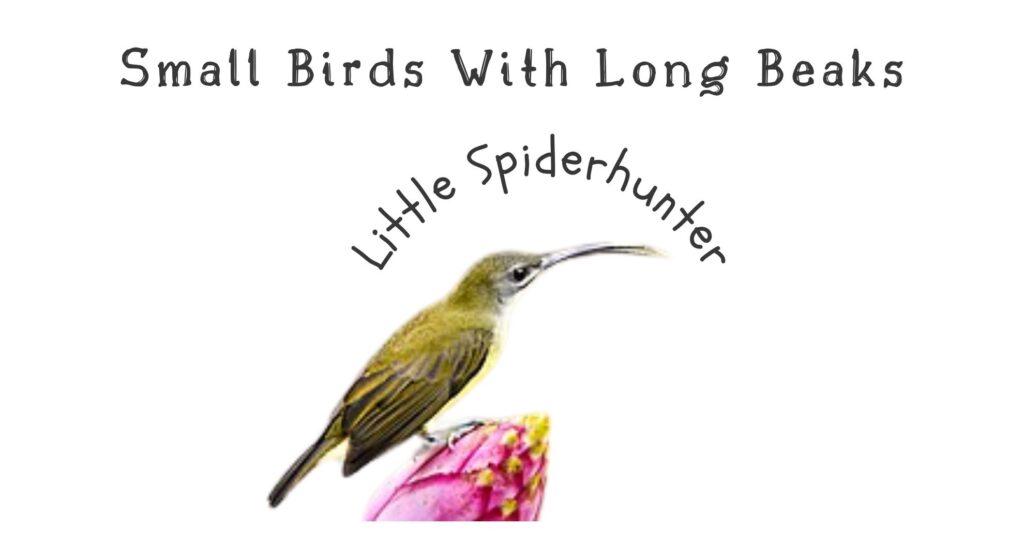
– Eastern Spinebill
This bird has a long, down-curved beak, a dark black cap on the head of males and a grey cap on females, red eyes, a white chest with a dark border, and a dark brown throat patch.
A spinebill is a small brown bird with a long beak found in Australia. They are also found in the forest, heathlands, yards, parks, and woodlands of the Eastern part of the continent. They feed on insects, spiders, and nectar.
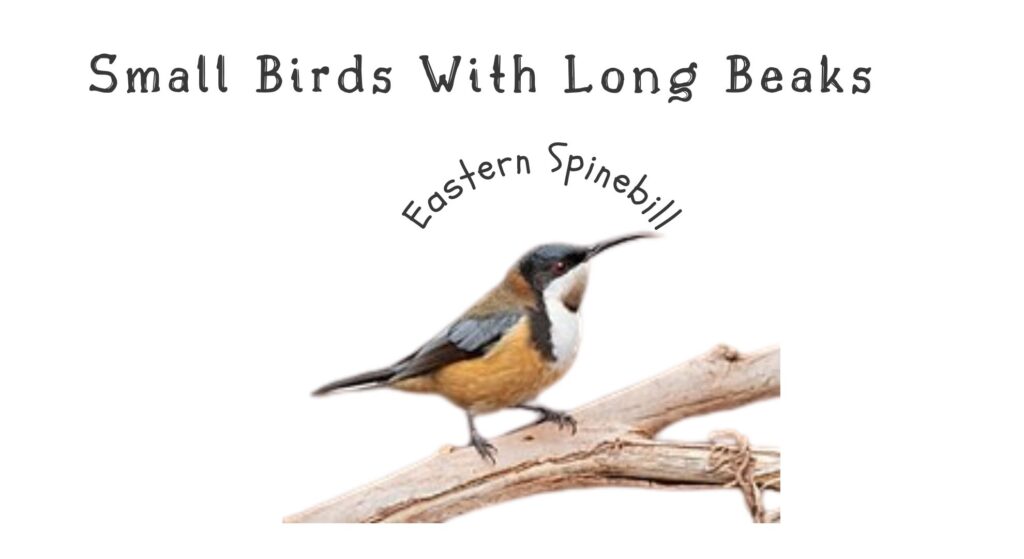
– Slender-Billed Scimitar Babbler
This bird has orange-brown plumage and a large downward-curved bill. It has a dark grey head, a white stripe above the eyes, and a white throat.
Scimitar babblers are found in Southeast Asia and live in forests and thickets for a whole year. They feed on berries, spiders, and insects.
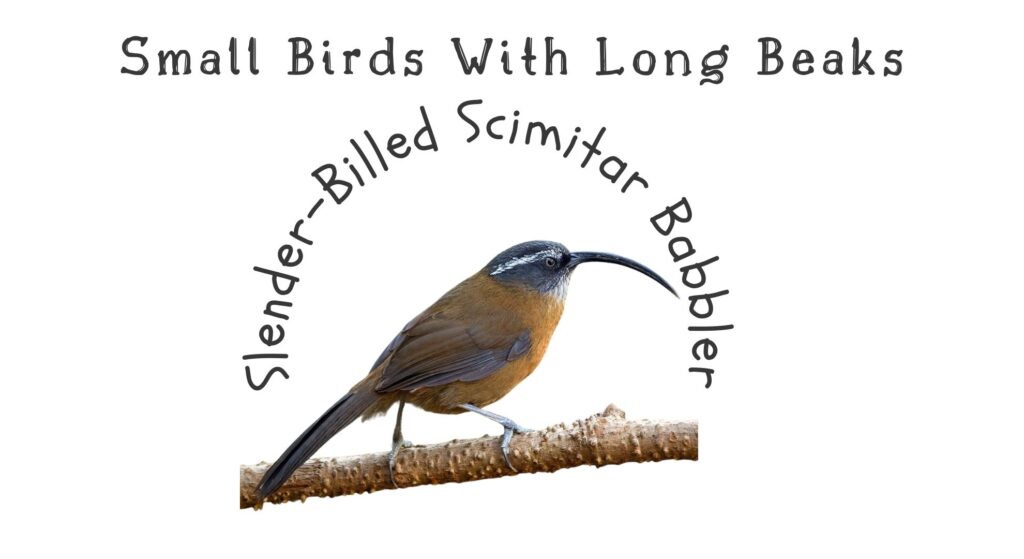
– Short-Tailed Scimitar Babbler
This scimitar babbler has a dark brown babbler with a long beak. They have a greyish-brown face and white throat. This species is found in forests and dense thickets near water and prey on insects and spiders using their long unique beak.
– Greater Double-collared Sunbird
This bird is a large beak with colorful plumage. The males have bright colors with green heads and upper parts, red chest bands, dark wings, and tails. Females are plain, grey-brown with darker wings and tails.
They are found in the forest edges, woodlands, grassland, parks, savannas, fynbos, and yards of Southern Africa. Sunbird species primarily feed on nectar and also on spiders and insects.
– Loten’s Sunbird
Loten’s Sunbird has a long, decurved beak. The male has glossy purple upperparts, heads, and throat, a maroon band on its chest, brown wings and tail, and a grey-brown belly.
Females look different from males as they have grey upperparts, darker wings and tails, and pale whitish-yellow underparts. They are found in Sri Lanka and India and their habitats are forests, shrublands, yards, parks, and forests. They primarily depend on spiders, insects, and nectar for their food
– Green Hermit
The male Hermit has bright, blue-green plumage, a dark grey face, downward reddish beak. The female hermit has grey upperparts, a dark face mask, a grey belly, and longer bill and tail features.
This bird is native to North South America, and Central America where they live in forests and forest edges. They are non-migrated but may migrate for food like insects, spiders, and nectar.
– Long-Billed Starthroat
Long-billed Starthroat, a relatively large hummingbird species, lives in Central America, Southern Mexico, and Northern South America. Its male species has a dark, purple throat, light blue crown, and long-straight beak. Females have green crowns and dusky-grey throats.
Starthoart is found in woodland, coffee plantations, forests, yards, and forest edges. They migrated in winter from high to low elevations. This species eats spiders and insects to get proteins and nectar to gain sugar.
– White-eared Jacamar
White-eared Jacamar has pinkish-red straight beaks, red eyes, and white ear patches on both sides of the head. They live in forest edges and forests of Northwestern South America and feed on insects for survival.
– Streaked Spiderhunter
Black streaking throughout the body gives the streaked spiderhunter a unique appearance. This species has white-yellow underparts and yellow-green upperparts.
They are found in Southeast Asia and are forest birds that don’t migrate. They feed on nectar and insects.
– Violet Sabrewing
This hummingbird species is found in Southeastern Mexico, Northern South America, and Central America, where they live in woody grassland and evergreen forests. Male species have violet plumage, dark green, violet, and green upperparts, and dark violet and blue underparts. Females are darker on the upperparts and greener on the underparts. They feed on insects, spiders, and nectars.
– Long-billed Hermit
This tiny bird has a long curved beak and eats spiders, insects, and nectar. Their habitat is plantations, forest edges, and forests in Southern Mexico, Northern South America, and Central America.
– Rufous-tailed Jacamar
This multi-colored small bird has a dagger-like beak,copper-green upper parts, green head, copper-green chest, and white throat. Females look like males but have different throat colors. The male has a white throat and the female has a buffy throat.
They live in marshes, savannahs with scattered trees, forest edges, forests, and river banks in Southern Mexico, South America, and Central America. They feed on insects.
FAQS – Related to Small Birds With Long Beaks
What is the advantage of the large beak of small birds?
Long beaks help small birds access insects and nectar from hard-to-reach places.
What is the smallest bird with a large beak?
Bee Hummingbird is famous as the smallest bird with a long beak.
Where do small birds with long beaks are found?
They are typically found in regions with flowers like gardens or forests.
What is the smallest bird in the world?
Bee Hummingbird is the world’s smallest bird. Hummingbirds are the tiniest birds in the world. They average 8.5cm long and can weigh between the weight of 1 and 8 pennies (2 and 20 gms ).
Conclusion:

The species of small birds with long beaks play an important role in the environment. Their long beak takes the nectar from flowers that are out of the reach of other animals and helps to continue the pollination process. You can get detailed information about the small birds with large beaks from this article.



